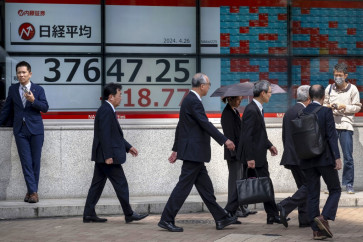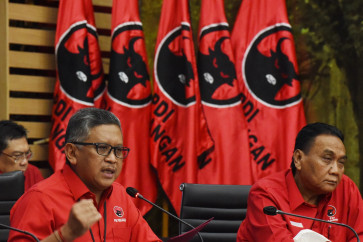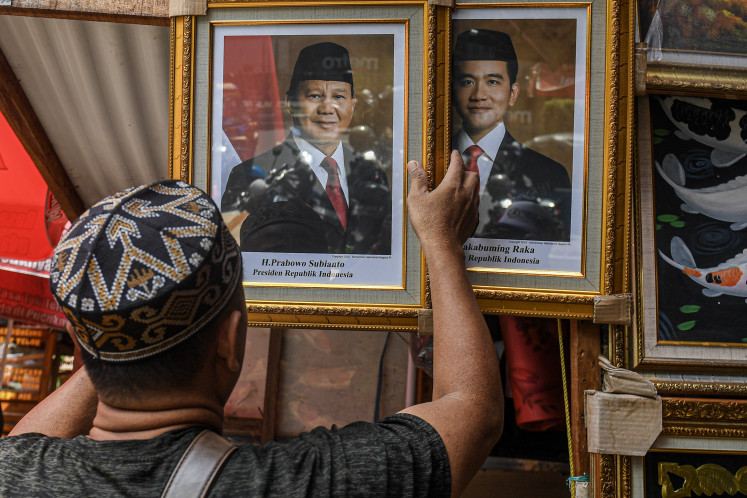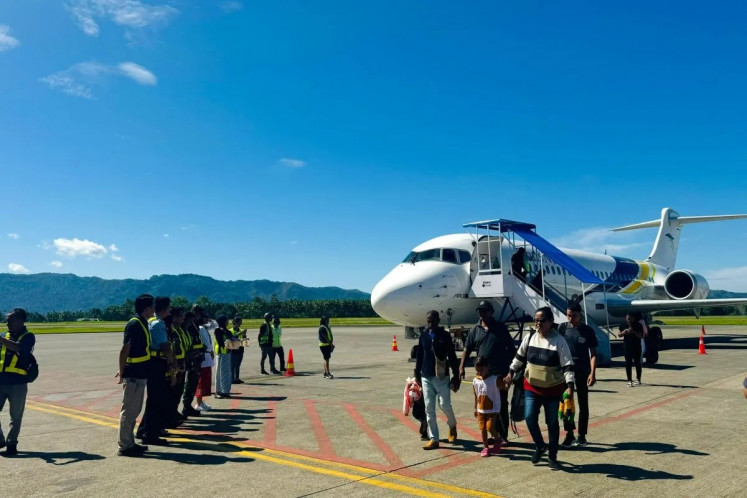Improve insurance against disasters
The deaths and devastation from the powerful earthquake in Central Sulawesi in September is a rude awakening of how vulnerable Indonesia is to natural disasters
Change Size

T
he deaths and devastation from the powerful earthquake in Central Sulawesi in September is a rude awakening of how vulnerable Indonesia is to natural disasters. The strong tremors, measuring 7.4 on the Richter scale, and the ensuing tsunami and soil liquefaction, killed more than 1,400 people, injured 2,500 others and displaced more than 125,000.
Occurring at a time when the nation is gearing up for the 2019 general election, the tragedy seems like a blip in the current political climate, with a narrative that is separate from the current political discourse.
It does not have to be like this. Those campaigning for office at national and regional levels could use the South Sulawesi tragedy to raise community and national awareness of the need for better mitigation measures and responses.
Whether contesting the presidential or legislative election, they could campaign for a broader agenda on disaster preparedness. They can provide the leadership to raise greater awareness at community and national levels, which, as the Central Sulawesi quake shows, is woefully lacking.
The insurance industry could get in on the act. Indonesia has been referred to as a “supermarket for disasters” by the Meteorology, Climatology and Geophysics Agency (BMKG) as it is located along the Pacific “Ring of Fire”, which is home to 90 percent of the world’s most active volcanoes and 90 percent of global earthquake activities.
Indonesia ranked 33rd in the 2017 World Risk Index published by the United Nations University Institute for Environment and Human Security. The report surveys 171 countries and looks at their exposure, vulnerability, susceptibility and capacities to cope and adapt to natural disasters.
It may be encouraging to see 32 other countries that are more vulnerable — Vanuatu, Tonga and the Philippines ranked in the top three — but one should also consider the number of lives at stake in the archipelago, which has the world’s fourth-largest population. Around 40 million Indonesians live at risk of natural disasters.
History is the best reminder of the dangers we face. The 1883 eruption of Mount Krakatau is recorded as one the world’s largest volcanic explosions, causing a tsunami that swept the western part of Java and southern part of Sumatra, and its ashes darkening the skies all the way to Europe.
Palu and Donggala, two areas in Central Sulawesi which were worst hit in September, have been susceptible to disasters, with 21 tsunamis recorded since 1820, the highest for any Indonesian region. Media investigations found that people in the two areas were not aware of this history and were not prepared for the latest earthquake.
Nor have we learned much from the 9.0-magnitude earthquake and tsunami in Aceh in 2004, in which over 200,000 people were killed or went missing, and which brought untold destruction.
The early warning system set up after the Aceh disaster malfunctioned in Palu and Donggala.
A political campaign can call for revolutionary mental changes to instill social and physical infrastructures that complements tighter regulations on disaster mitigation. The insurance industry is ready to help.
Some countries subsidize insurance premiums in areas prone to natural disasters. Their government partners with the insurance industry to offer protection in areas hard to anticipate, or where risk costs are so high for the insurance industry to bear alone.
Turkey makes earthquake insurance schemes compulsory for property owners and the government covers the gap in compensation payments beyond the coverage.
The Japanese Earthquake Reinsurance (JER) pays earthquake claims of up to 104 million yen (US$900,000) for losses of up to 691 million yen, with 50 percent coming from the government.
Claims of more 6.2 trillion yen are 98.4 percent government reimbursed with the balance met by private insurers and the JER. The New Zealand Earthquake Commission covers home owners automatically for quake risk. The government covers the balance of the costs met by the commission.
In Indonesia, several initiatives to provide disaster insurance with government involvement have been discussed but none materialized — although the 2014 Insurance Law includes mandatory insurance.
The insurance industry has compiled a data base on national catastrophe insurance, cataloguing quake risks over a period of 550 years and comparing it with seismology records covering 117 years held by the BMKG, the Inventory Module Catmodel (said to be the only one in the world) and the high-resolution Jakarta Flood Model (said to transcend the models of SwissRe and Nanyang Technology used by Singapore University).
A road-map concept has been developed for Disaster Risk Financing and Insurance, offering instrument options for financing insurance to mitigate natural disaster risks. Rehabilitation and reconstruction under a parametrically based national natural disaster insurance scheme is always a challenge.
Indonesia has proposed the disaster risk financing and insurance scheme during the Annual Meetings of the International Monetary Fund and World Bank Group in Bali last month, which include the creation of catastrophic bonds by securitizing disaster payments through the issuance of obligatory instruments.
Fortuitously perhaps, the earthquakes in Sulawesi and Lombok, West Nusa Tenggara, gave the Indonesian proposal the needed push.
Better insurance schemes must inevitably be part of any campaign to raise the nation’s awareness about better preparing and responding to the next big natural disasters.
The general election provides a healthy political stimulus and opportunity to invigorate a national campaign toward heightened responsiveness to — and mitigation of — disasters that can reach all levels of the community and the spectrum of policymakers.
__________________________
The writer is a member of the Indonesian Insurance Mediation and Arbitration Board (BMAI) and the president commissioner of L&G Insurance Brokers & Consultant. The views expressed are his own.









